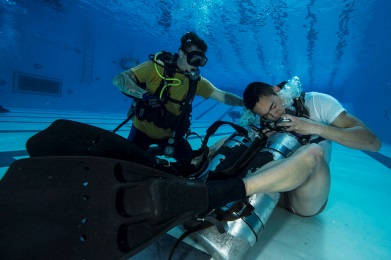Nothing can be more crowd-pleasing in a pool or a beach full of swimmers and spectators than pulling up your superlative diving feats. Diving may seem easy to learn—merely jumping with poise into a body of water will do the trick. But as easy as it may seem, diving is actually a difficult skill to learn. Before learning to dive in a refined and proficient motion, it is important to learn the basics of diving.
First thing to consider is getting a dive instructor—no other people can help you out in mastering the skill of diving other than him. Most likely, learning to dive will entail you to have a basic skill in swimming. Otherwise, it would be futile to brag a diving skill and be seen struggling out of the water into the shore!
The first skill in learning to dive is the ability to enter the water. You have three different options of doing it—head first, feet first or jumping in the water. Diving is best learned using a pool. Safety is a significant standard in learning to dive and unlike jumping off from a cliff or seas, there is an assurance that a pool is safer since it has no unfamiliar rocks formations beneath it.
The next important thing when learning to dive is the technique of equalizing the water pressure and that of your inner ear. The pressure of the water increases as you submerge deeper in the water. This can be effectively overcome by pretending to chew something or by blowing your nose gently.
Lastly, the ability to maintain equilibrium under water is a basic skill in learning to dive. While you are underneath the surface, there are two forces or weights prevailing on your body—that of the elevating force of the water and that of your own weight. Achieving a balance between both forces is a skill which is important in learning to dive because it will determine your ability to stay beneath the surface and achieve buoyancy.
Photo Credit:Official U.S. Navy Page
Login to
Don't have an account?
Access Free
Access Free




